Comprehensive Energy Data Intelligence
Information About Energy Companies, Their Assets, Market Deals, Industry Documents and More...
Agrivoltaics: Merging Solar Power and Farming Across the USA – Promise, Problems, and the Path Ahead
10/18/2024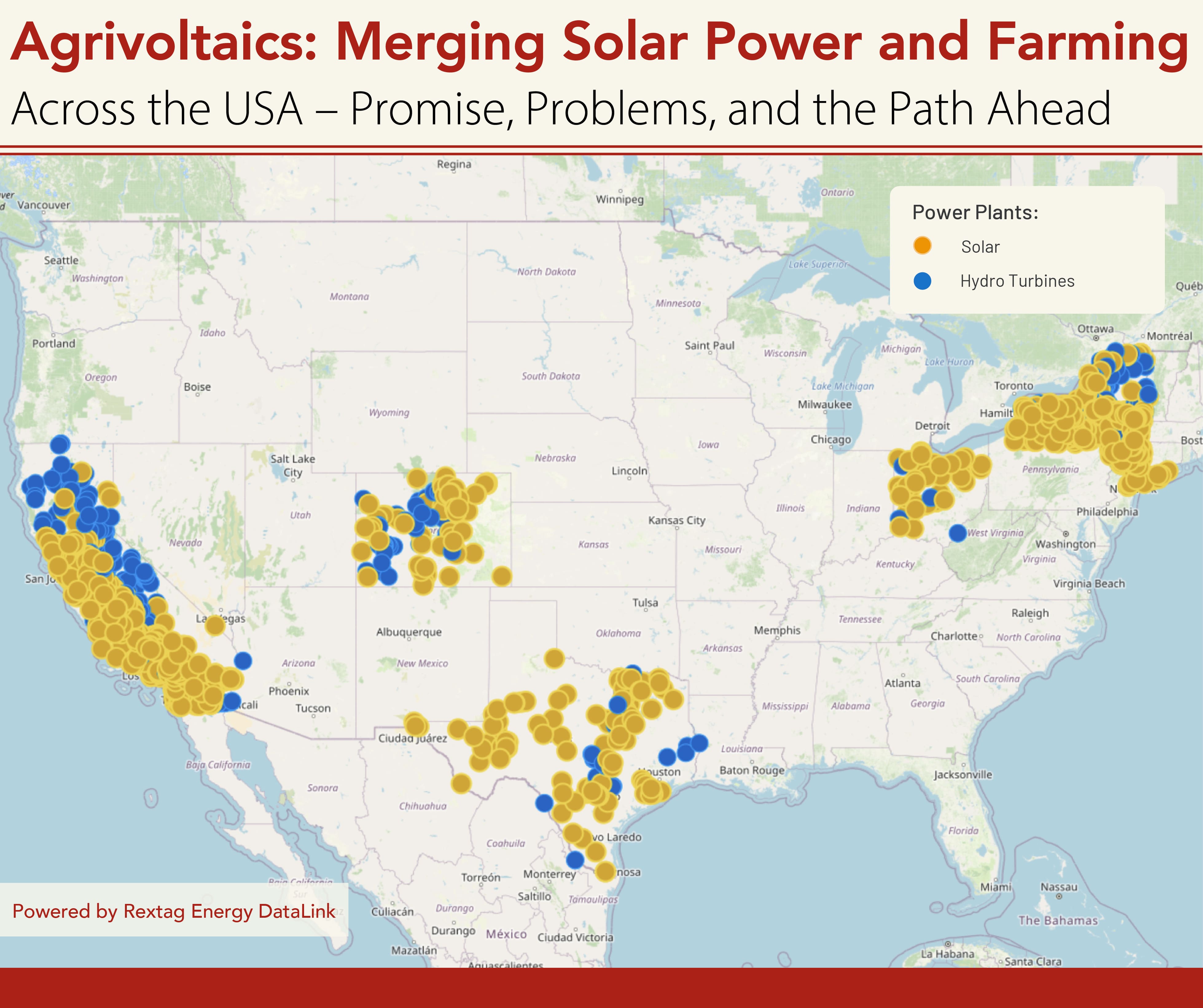
Agrivoltaics, a combination of agriculture and solar power generation on the same land, is quickly gaining traction across the United States as a solution to balancing the demand for renewable energy and the need to preserve farmland. As the country pushes toward its goal of achieving net-zero emissions, solar power is expected to play a significant role in this transition. However, concerns about the loss of agricultural land have led to the rise of agrivoltaics, where farming and solar energy production coexist.
What is Agrivoltaics?
At its core, agrivoltaics is the practice of using the same plot of land for both solar power production and farming. The solar panels provide shade for crops, which can reduce water usage and protect plants from extreme temperatures. In return, the crops below the panels can actually help cool the panels, improving their efficiency.
Benefits:
- Improved Water Efficiency: The shade from solar panels reduces water loss through evaporation, cutting irrigation needs by up to 50% in some cases.
- Higher Crop Yields: Crops grown under solar panels often have improved yields, thanks to the cooler microclimate created by the shade, which reduces plant stress.
- Energy Efficiency: Agrivoltaic systems improve the efficiency of solar panels by cooling them through evaporative processes from the plants below.
- Dual Income for Farmers: Farmers can continue to farm while also earning income by leasing their land to solar developers, creating a financial buffer in times of fluctuating agricultural markets.
However, this concept—while promising—has not been without controversy. While advocates see a future where solar farms and food production harmoniously coexist, others see it as yet another hurdle for farmers, many of whom are already struggling to stay afloat.
Agrivoltaics in the United States: A State-by-State Overview
Across the country, agrivoltaics is being explored as a way to balance energy production and farmland preservation. But the real-world implementation varies widely by state, and while some regions are embracing it, others are more cautious.
1. New York: A Research Hub for Agrivoltaics
New York is at the forefront of agrivoltaic research. Cornell University is leading efforts to understand how solar panels can coexist with dairy and hay farming. In New Bremen, New York, a local dairy farmer was hesitant to lose his hay fields to a solar developer, but after careful planning, the panels were spaced further apart to allow tractors to pass through. The result? The farmer still harvested 85% of his usual hay crop while generating solar energy.
Real-life challenge: While this solution worked for the farmer, not all are convinced. “Some people fear this will be the death of farming,” says Rich Stedman, professor at Cornell. “Others think solar leases might be what keeps farmers in business.”
Key Companies:
- Sun’Agri: Working with orchards in New York, experimenting with using solar panels to protect fruit from frost.
- ClearPath Energy: Collaborating with farmers to customize panel setups that allow continued farming while generating solar power.
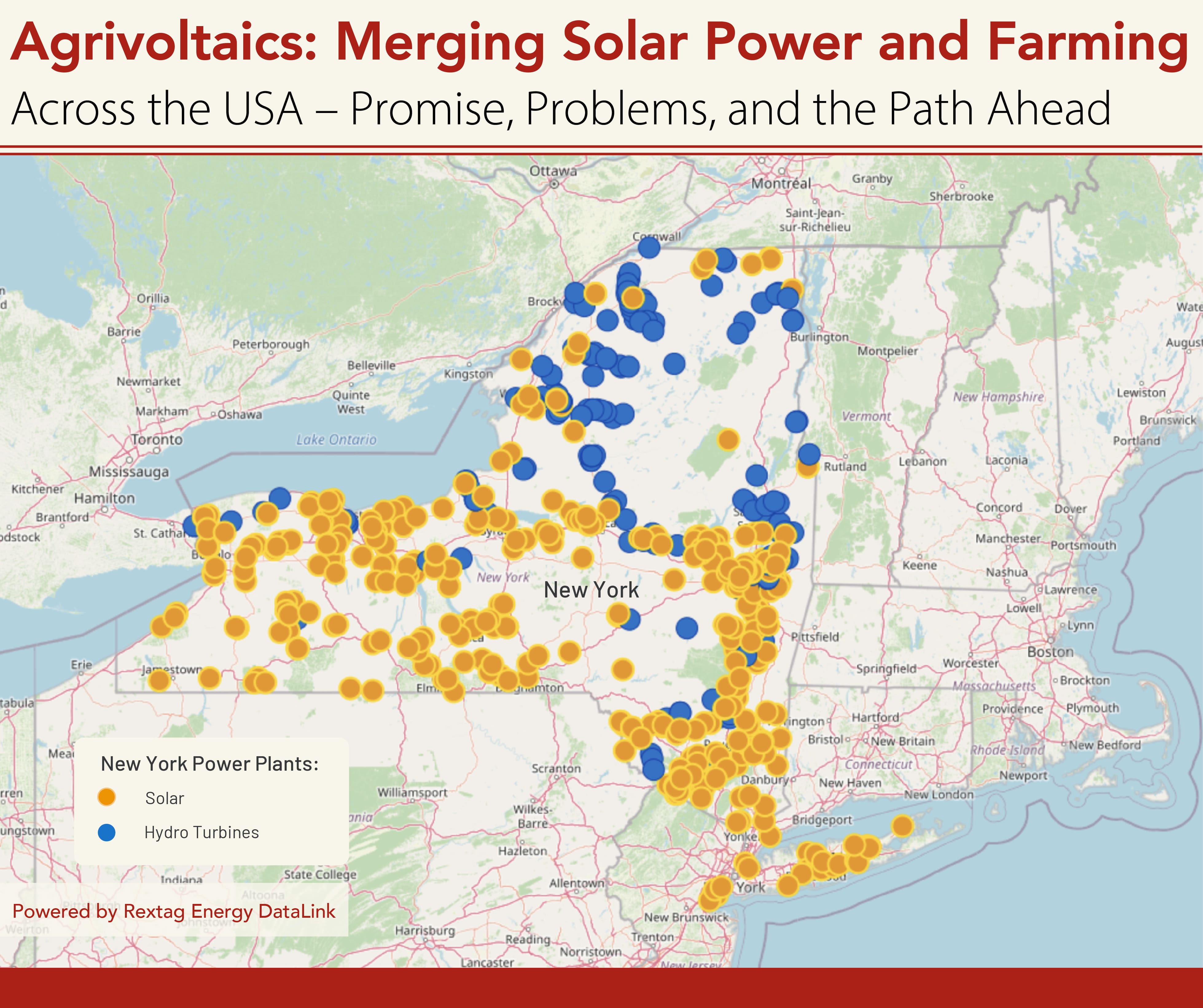
2. Ohio: Balancing Solar and Row Crops
Ohio is home to one of the largest agrivoltaic farms in the country, led by Savion, a subsidiary of Shell. In this project, soybeans and solar panels coexist, making it one of the most ambitious agrivoltaic efforts in the U.S. However, the project faced local opposition, with some farmers skeptical of the long-term benefits. Sheldon Kimber, CEO of Intersect Power: Skeptical about agrivoltaics, saying, “It’s absolutely not feasible at scale beyond sheep and pollinators.”
Real-life example: In Ohio, Sarah Moser, senior director at Savion, explained how local farmers were initially resistant to the idea. “At first, they didn’t like the idea of losing farmland to solar, but once we showed that crops like soybeans can thrive alongside the panels, they started to come around.” Still, it’s a delicate balance—many farmers admit they’d rather just lease their land outright for solar, which pays more than growing crops.
Key Companies:
- Savion: Operating large-scale solar farms integrated with row crops in Ohio, pushing the boundaries of dual-use solar farming.
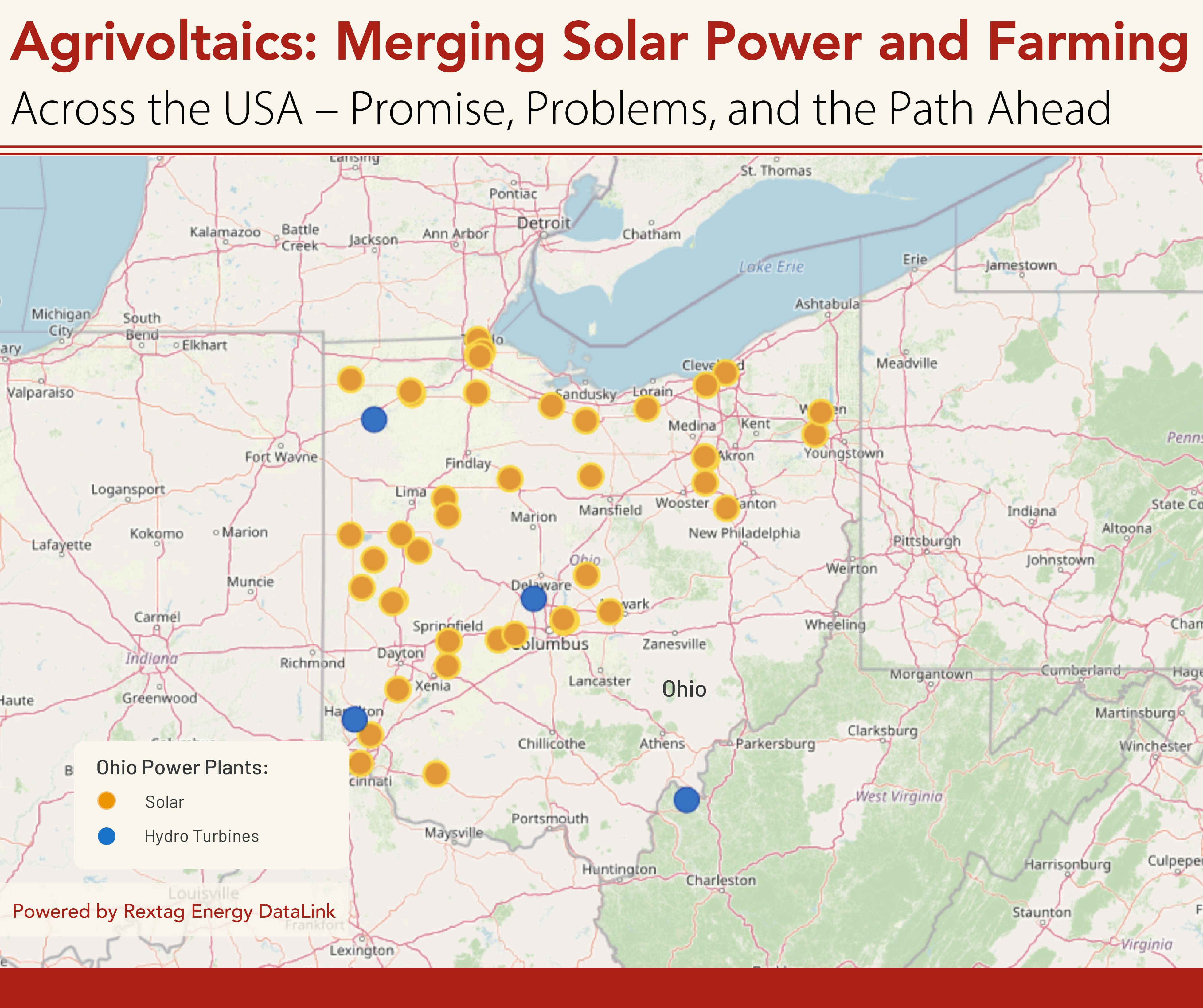
3. Colorado: A Pioneer in Solar Grazing
In Colorado, agrivoltaics has taken a different turn. The state is known for its use of solar grazing, where sheep graze beneath solar panels, managing vegetation while also benefiting from the shade. At Jack’s Solar Garden in Boulder County, solar panels rotate throughout the day, creating varied microclimates that benefit not only the sheep but also crops like kale, lettuce, and even flowers.
Real-life challenge: While the model works well for smaller farms, it’s far from being economically feasible for large-scale operations. Chad Raines, who runs a sheep farm across several solar sites in Texas and Arkansas, explains, “Solar grazing gives us income, but the logistics of moving sheep from one site to another can be a headache. It works for now, but scaling it is tough.”
Key Companies:
- Jack’s Solar Garden: Leading the charge in solar grazing with their 1.2 MW facility.
- Lightsource BP: One of the largest developers, experimenting with sheep grazing under solar panels.
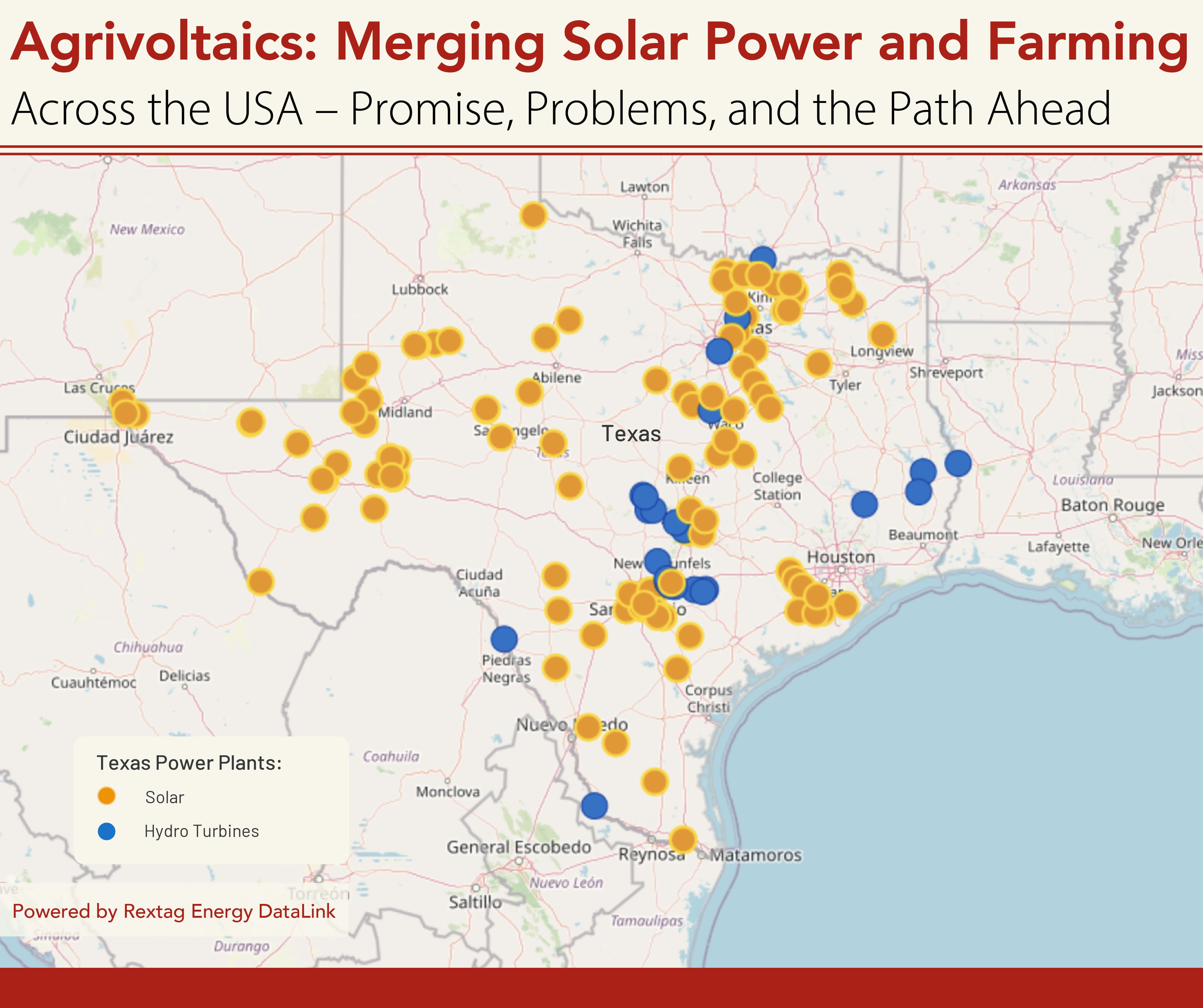
4. California: Saving Water and Protecting Crops
In drought-prone California, water conservation is crucial, and agrivoltaics is being seen as a potential game-changer. Solar panels are being integrated with vineyards, almond orchards, and blueberry fields, providing shade that reduces water evaporation and shields crops from the intense California sun.
Real-life challenge: While agrivoltaics could help save water, the high upfront costs are a significant barrier. According to Enel Green Power, a leader in California’s agrivoltaic development, raising solar panels high enough to accommodate farming equipment can make a project three times more expensive than traditional solar installations.
Key Companies:
- Enel Green Power: Integrating solar into vineyards and orchards, focusing on water savings.
- BlueWave Solar: Specializing in using solar panels to boost specialty crops like blueberries.
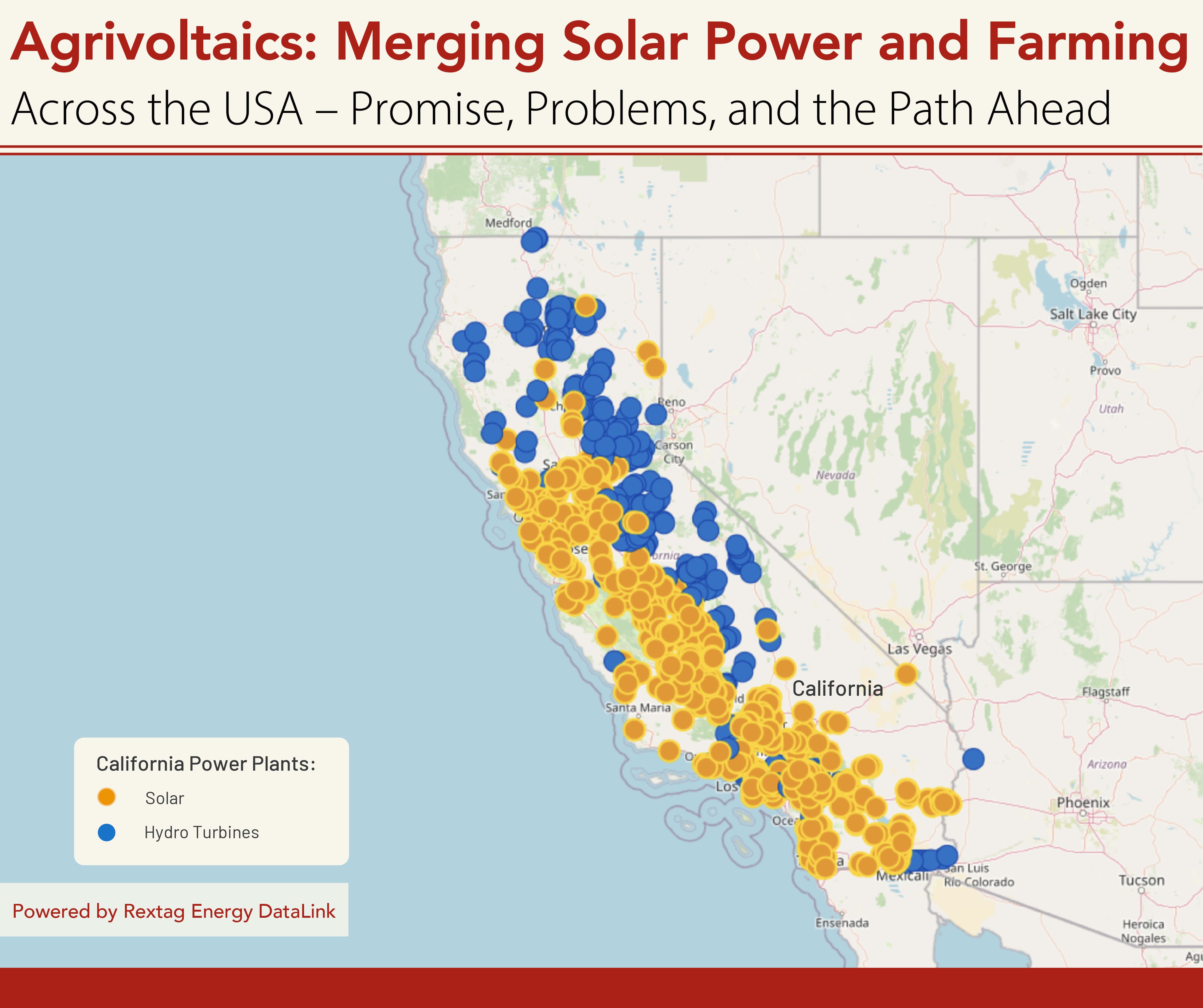
5. Texas: The Solar Grazing Capital
Texas is one of the largest producers of solar power in the U.S., and it’s also embracing agrivoltaics in a big way, particularly through solar grazing. Farmers are leasing their land for solar arrays while continuing to raise sheep and cattle. With more than 6,000 sheep grazing under solar panels, Texas has one of the largest solar grazing contracts in the country.
Real-life challenge: While solar grazing is growing, not all farmers are sold on the idea. Many still prefer to lease their land outright for solar installations because it’s simpler and more profitable. As Chad Raines, a fourth-generation farmer in Texas, put it, “If I had stuck with cotton, I would have gone broke, but this [solar grazing] isn’t easy money either.”
Key Companies:
- Silicon Ranch: Partnering with farmers to integrate livestock grazing with solar energy production.
- Lightsource BP: Expanding its agrivoltaic projects, with a strong focus on solar grazing in Texas.

Agrivoltaics: Current Trends and Opportunities
While agrivoltaics is gaining attention, it still represents a small fraction of solar energy production in the U.S. According to the National Renewable Energy Laboratory, only about 1% of the country’s solar power comes from agrivoltaic sites. Yet, with increasing government support and technological advancements, that number is expected to grow.
Increased Interest from Farmers: A recent survey from the Solar and Storage Industries Institute showed that over 70% of farmers are open to large-scale solar projects on their land if they can continue farming.
Technological Innovations: Anti-tracking solar panels, which rotate to allow sunlight onto crops, and bifacial solar panels, which capture light from both sides, are among the innovations driving the field forward.
Government Support: The U.S. Department of Agriculture and the Department of Energy are pumping millions into research and grants to explore agrivoltaics, focusing on how to make these systems more cost-effective and scalable.
Leading Companies in Agrivoltaics
Several companies are driving agrivoltaic innovation, working with farmers and researchers to develop systems that can maximize the benefits of both solar energy and agriculture.
- Savion: A Shell subsidiary, Savion is leading large-scale agrivoltaic projects, particularly in Ohio, where row crops are integrated with solar panels.
- Enel Green Power: With projects in California, Enel is focused on integrating solar panels with vineyards and orchards, reducing water use and protecting crops from extreme weather.
- Lightsource BP: A key player in both Texas and Colorado, Lightsource BP is experimenting with solar grazing and crop-based agrivoltaics.
- Jack’s Solar Garden: A community-driven project in Colorado that combines solar power with crop cultivation and sheep grazing.
Challenges and Criticisms
Despite its promise, agrivoltaics faces several significant hurdles. The most pressing challenge is the cost. Raising solar panels high enough to accommodate farm equipment or adjusting panel spacing can add up to three times the cost of a traditional solar installation. Farmers like Chad Raines are cautiously optimistic but acknowledge that the logistics of moving livestock and maintaining solar farms isn’t always easy.
Another challenge is the uncertainty around crop yields. While some crops benefit from the shade, others may struggle without full sunlight. As researcher Madhu Khanna of the University of Illinois Urbana-Champaign pointed out, “For now, if you’re purely motivated by financial gain, it’s hard for agrivoltaics to compete with standard solar leases.”
Lastly, there’s a fear of what’s being called “bee-washing”—developers promising agrivoltaic benefits but delivering little more than solar farms with some flowers planted around them. According to Charles Gould at Michigan State University, “The worst-case scenario is they say they’re supporting agriculture, but when you show up, you can’t even plant anything.”
Conclusion: The Future of Agrivoltaics in the U.S.
Agrivoltaics presents a promising solution to one of the central dilemmas of the renewable energy transition: how to scale up solar power without displacing valuable farmland. While it’s still in its early stages in the U.S., growing interest from farmers, developers, and government agencies suggests that the sector will continue to expand.
However, challenges around cost, crop yield, and public perception remain. As companies like Savion, Enel Green Power, and Lightsource BP continue to refine the technology, the hope is that agrivoltaics will become a more viable option for farmers across the country.
Still, as we look ahead, it’s clear that much of the success of agrivoltaics will depend on finding the right balance between solar power production and maintaining America’s agricultural heritage. For now, the future of this dual-use solution is bright—but not without a few clouds.
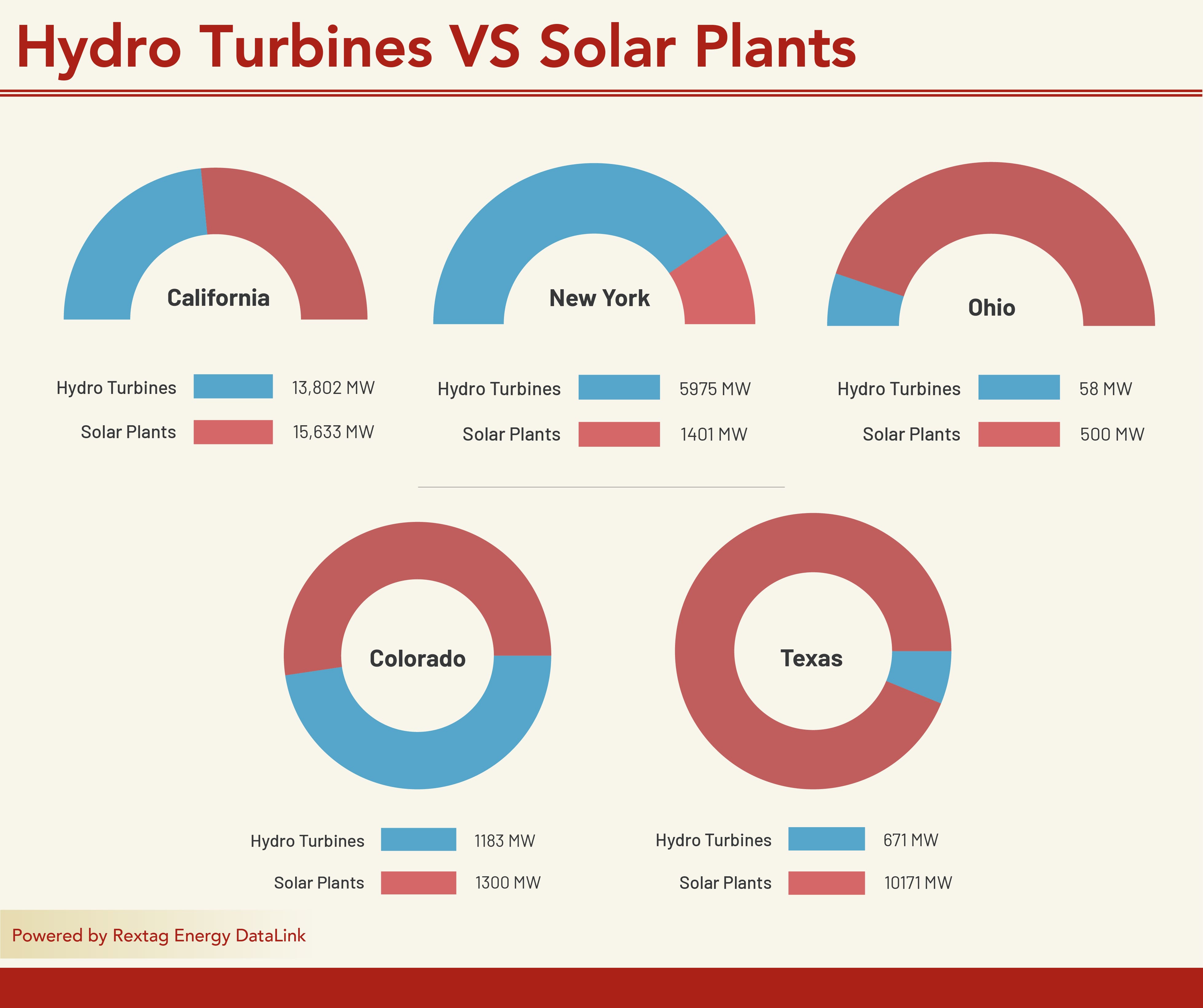
If you are looking for more information about energy companies, their assets, and energy deals, please, contact our sales office mapping@hartenergy.com, Tel. 619-349-4970 or SCHEDULE A DEMO to learn how Rextag can help you leverage energy data for your business.
Oklahoma Natural Gas Infrastructure Map: TOP Companies, Deals, Latest Update
![$data['article']['post_image_alt']](https://images2.rextag.com/public/blog/R 222 (blog) SEO - Oklahoma Natural Gas Infrastructure.png)
In 2023, Oklahoma's natural gas industry continued to be a significant force in the state's economy, contributing a substantial $57 billion. This hefty contribution firmly positions Oklahoma as a major natural gas and crude oil producer, not just locally but also in the U.S. Mid-Continent region, which spans across neighboring states like Kansas, Texas, Arkansas, Louisiana, and New Mexico.
San Juan Basin Bankruptcies and Acquisitions - Southland Royalty Co.
![$data['article']['post_image_alt']](https://images2.rextag.com/public/blog/SouthlandMap.jpg)
Southland Royalty sold its San Juan Basin assets to MorningStar for $17.3 million. We go over the basics with an emphasis on the data needed to evaluate Southland Royalty's acreage in the San Juan Basin.
![$data['article']['post_image_alt']](https://images2.rextag.com/public/blog/328_Blog_Why Are Oil Giants Backing Away from Green Energy Exxon Mobil, BP, Shell and more .jpg)
As world leaders gather at the COP29 climate summit, a surprising trend is emerging: some of the biggest oil companies are scaling back their renewable energy efforts. Why? The answer is simple—profits. Fossil fuels deliver higher returns than renewables, reshaping priorities across the energy industry.
![$data['article']['post_image_alt']](https://images2.rextag.com/public/blog/327_Blog_Oil Market Outlook A Year of Growth but Slower Than Before.jpg)
The global oil market is full of potential but also fraught with challenges. Demand and production are climbing to impressive levels, yet prices remain surprisingly low. What’s driving these mixed signals, and what role does the U.S. play?
![$data['article']['post_image_alt']](https://images2.rextag.com/public/blog/326_Blog_USA Estimated Annual Rail CO2 Emissions 2035.jpg)
Shell overturned a landmark court order demanding it cut emissions by nearly half. Is this a victory for Big Oil or just a delay in the climate accountability movement?